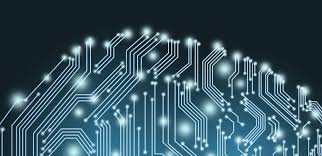Source- bgfalconmedia.com
BGSU is gradually implementing artificial intelligence, or machine learning, on campus in ways that should theoretically be able to help with efficiency and compensate for human errors while supplementing our strengths.
Machine learning is the capability of computers to learn new information without someone giving specific instructions to them. They learn by analyzing patterns and data, rather than someone programming them. Artificial intelligence can potentially simulate human-like patterns of thinking, but emotions are thought to be exclusively-biological. John Ellinger, BGSU’s chief information officer, says that machine learning is the technology that is by far the most likely to change higher education in the next ten years.
“It may be 2028 or 2030 before we completely implement it, but the gains that are being made in this area are striking,” he said. “I just read an article that higher education across this country would be replacing up to as much as 10 per cent of our tasks with artificial intelligence.
Computer science professor Venu Dasigi knows one of BGSU’s current uses of fairly primitive AI is identifying students that may need help to avoid failing classes or dropping out.
“What I know of is that the AI we use, where our systems learn from big data, we try to use an advising program where we work with students and so on. The university makes use of whatever it has seen from student patterns in the past,” Dasigi said.
Amazon and some of its products utilize a form of artificial intelligence designed to be consumer-oriented.
“Alexa is nothing more than something attached to the internet, which has programming behind it to let you ask questions, and it goes and finds an answer. Another example is Amazon’s shopping experience. It lists the things that you might be interested in, so they are using predictive analytics, and lots of companies do that now,” Dasigi said.
Ellinger and Dasigi agree the most physically-tangible application on campus for machine learning currently, is the robotics lab in the basement of Hayes Hall.
“It’s a lot more about using automatic manufacturing. The robot motion needs to be optimized because the robot needs to figure out optimal trajectories for picking stuff out and things like that,” Dasigi said.
“We are at a point with AI where we probably will not be able to fully replace humans, at least for the next few years, in most cases. There are a few scattered cases, maybe, but most help desk cases or online check cases, most implementations, they should probably be supplementing a human and not replacing them,” Porco said.
The way that AI is rolled out at BGSU and other colleges across the nation spells out some clear advantages for the effectiveness of web-based operations. With that said, it isn’t a bad thing to stay vigilantly informed of how far it can intrude into people’s everyday lives.
